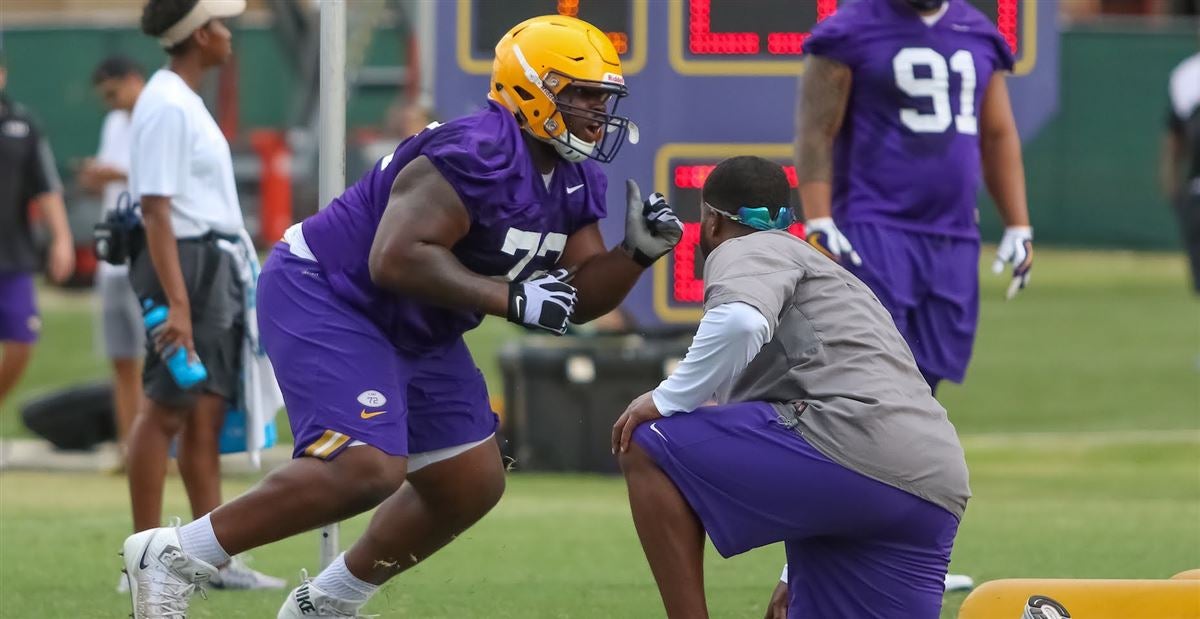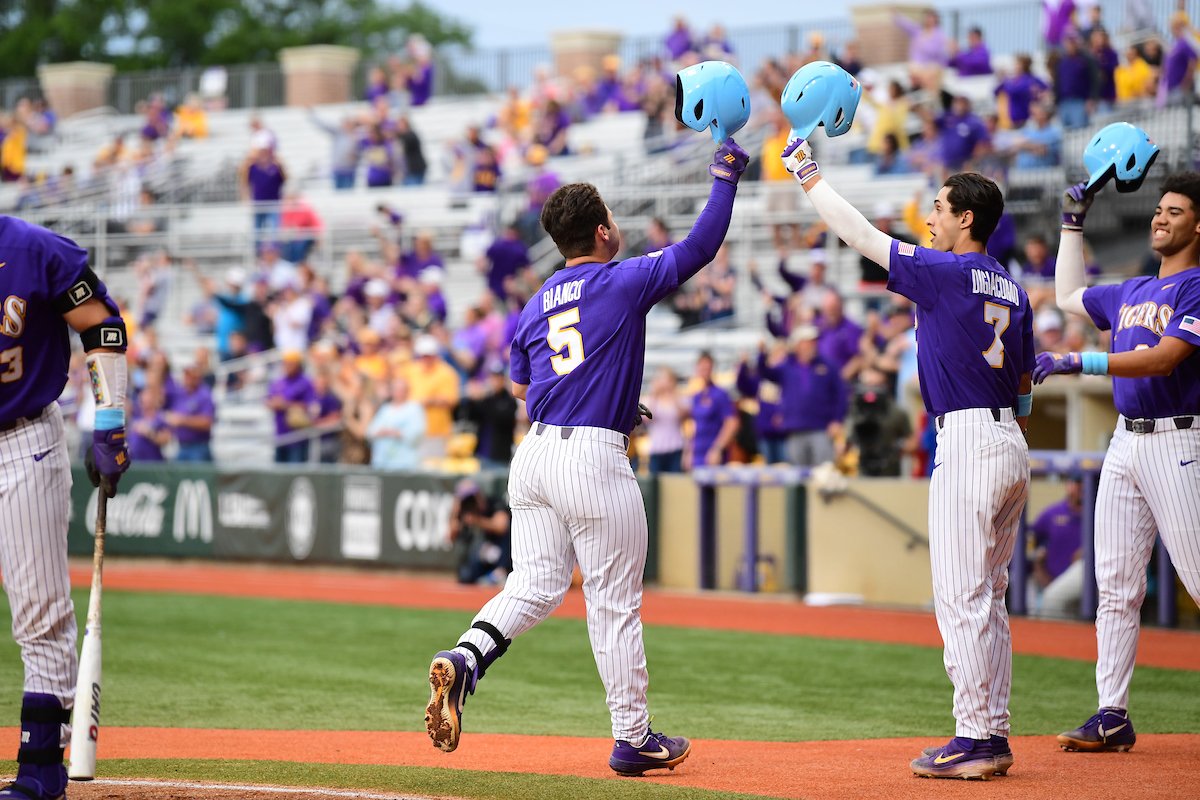
There’s two things you should know about Ed Orgeron when it comes to nose tackles: the former defensive line coach likes them massive, and he’s got a sense of humor about it.
LSU has been signing gargantuan linemen to stuff the middle of its defense since Orgeron joined the program in 2015. Signees like Ed Alexander, Tyler Shelvin, Dom Livingston and Siaki “Apu” Ika all checked in around the 350-pound mark upon arriving in Baton Rouge.
All of the players listed shared the common trait of uncommon athleticism for their considerable size. Their blend of size, power and explosiveness is tantalizing because, when going good, interior linemen that big can collapse the pocket as well as simply gobbling up blocks at the point of attack.

The challenge, of course, is getting such huge humans in good enough condition to stay on the field for more than a series or two.
Take Shelvin and Ika for instance. The two have battled since the spring to replace Alexander as LSU’s starting nose tackle. Both are a handful to block, as center Lloyd Cushenberry III can attest after a spring facing them.
“Both of them obviously are pretty large human beings,” Cushenberry said, drawing laughter. “But the thing about them is they can move so well. Most guys that big can’t really move. Those guys can do everything you want.”
Orgeron wants both of them to play around 340 pounds, and he hasn’t been shy about providing regular updates on their respective progress.
According to Orgeron, Shelvin weighed “a slim 373 pounds” back on National Signing Day 2017 — he’s down to a “slim 340” as of July 15. At one point he weighed 394 pounds, the coach said. Orgeron described Ika as a “nimble 364 pounds” after a particularly dominant practice this spring.
Both will play this season, regardless of who starts, but their respective conditioning will ultimately decide who finishes.
That’s where LSU strength and conditioning Czar Tommy Moffitt comes in.
So how does one go about training a 350-plus-pound nose tackles to play for four quarters? According to Moffitt, it all starts with the mental side of things.
“The first thing is you’ve got to get their confidence up,” Moffitt says. “Anybody that’s 380 to 350 pounds, they’re not going to be very confident in their ability to run. So you’ve got to give them work in small doses, develop some confidence.
“A lot of people give up mentally before they’re even physically challenged. So you give it to them in small doses and keep pushing and pushing and never give up. It’s a slow process, but you’ve got to keep pushing them and be positive.”
According to Moffitt, Ika arrived on campus this winter with a can-do attitude when it came to cutting weight. LSU asked him to lose two pounds a week during workouts, and the early enrollee responded by dropping six-to-eight pounds at a time.
Orgeron said this summer that Ika has a habit of gaining weight during trips home to Utah, but Moffitt seemed confident that the freshman would be in shape for the fall.
“He was really self-motivated,” Moffitt says. “He did a phenomenal job. He’s got a really good disposition. He’s really positive and has a great outlook on things. So it was really easy for him to drop his weight.”
It has been more of an up-and-down process for Shelvin, whose weight has fluctuated since arriving on campus in 2017.
Orgeron boasted in May 2017 that Shelvin had dropped 40 pounds (down to 325 LBs) by adjusting his diet, but he bulked back up to a “slim 364” pounds by that August, according to Orgeron’s comments at the time.
A light seemed to go on for Shelvin sometime between the stretch run of the 2018 season and this past spring. He’d cut down to a “slim 347” pounds as of Nov. 12, per Orgeron, and he’s down to the LSU’s target weight as of the coach’s most recent comments.
Being pushed by a true freshman seems to have brought the best out of Shelvin. LSU dropped Shelvin to second-team this spring, and Orgeron applauded the way he responded to close out spring ball. That hard work continued into the summer conditioning program.
“It was easier for Apu than it was Tyler, but Tyler never gave up,” Moffitt says. “We never gave up on Tyler, and he never gave up on himself. Tyler’s lost a lot of weight. He’s lost almost 60 pounds. This is the lightest Tyler’s been since he was in high school.”
Moffitt understands better than most that getting through to players with weight trouble isn’t as simple as running them until they drop in the Louisiana heat. Winning that battle requires patience, persistence and positive support.
It can be as tough to get those massive nose tackles to believe in themselves from a conditioning standpoint as it can be to block them one-on-one, but Moffitt says he wouldn’t have it any other way.
The long-time strength coach still loves the challenge, nd when it all finally clicks, the payoff can be massive — no pun intended.
“You can sup up a Chevrolet, but it’s never going to be a Lamborghini,” Moffitt says. “It’s a lot easier to do that than to try to make something out of nothing. Coach O has done an excellent job of giving us the big bodies to work with.
“They’re all like modeling clay to work with, and the bigger block of clay you have to work with, the better the end result is going to be.”
PHOTO BY TERRILL WEIL




Be the first to comment